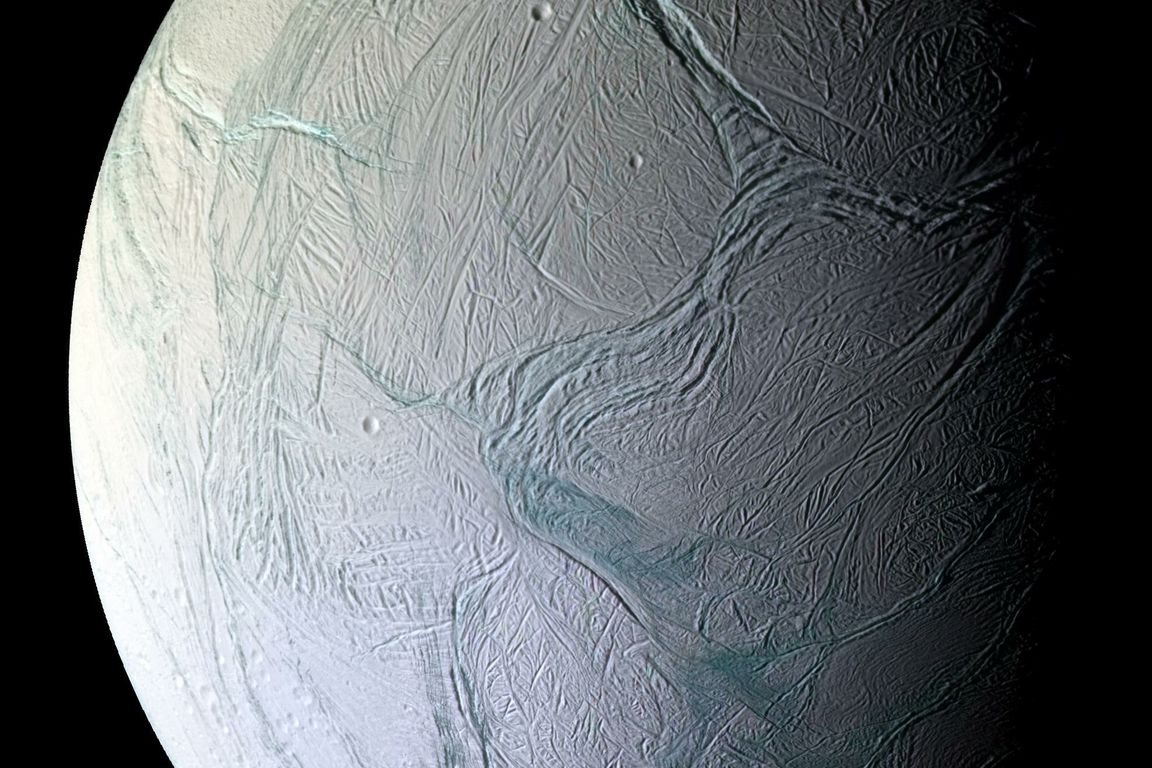 Enceladus’ icy surface. | Photo Credit: NASA/JPL/Space Science Institute
Enceladus’ icy surface. | Photo Credit: NASA/JPL/Space Science Institute
Enceladus is the sixth largest of Saturn’s 83 moons, and an “ocean world” with the potential to support extraterrestrial life under its thick surface ice shell. It is also known for spraying out tiny icy silica particles, a key component in one of Saturn’s rings. A new study led by UCLA EPSS doctoral student Ashley Schoenfeld (alongside three UCLA alumnae!) has found how and why this spraying process occurs: tidal heating in Enceladus’ core, combined with deep-sea hydrothermal vents.
Read more about their findings–and the implications regarding life on the icy moon–here: https://newsroom.ucla.edu/releases/saturn-enceladus-ejecting-material-deep-sea-vents
See their Forbes feature here: https://www.forbes.com/sites/jamiecartereurope/2023/03/18/saturns-wet-moon-enceladus-may-be-rapidly-flinging-microbes-into-space-say-scientists/?sh=2bf28e9325a4
